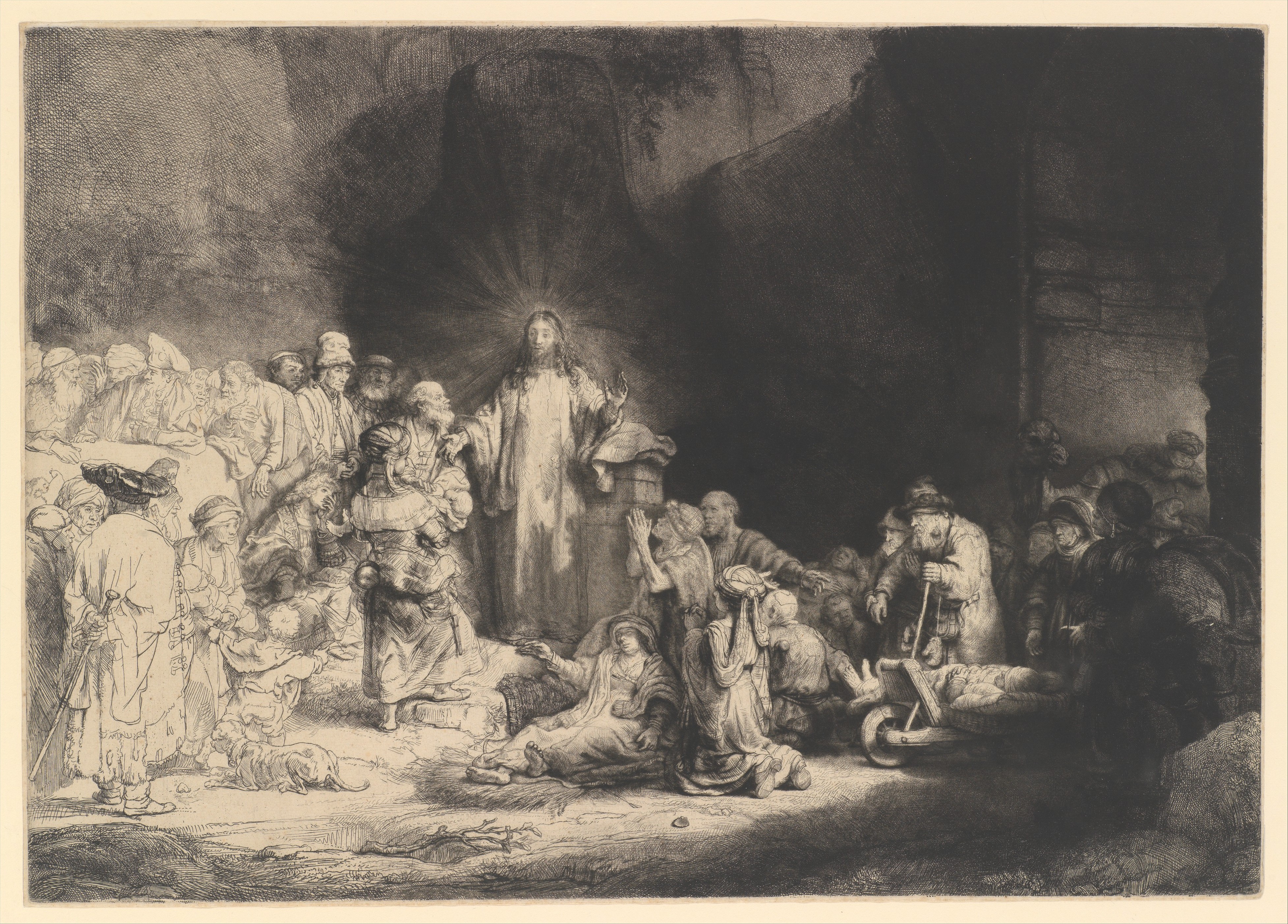The exhibition follows the evolution of Rembrandt’s work from his early years in Leiden in the 1620s through to his final years in Amsterdam in the 1660s. This significant breadth of work allows audiences to appreciate the inventive ways in which Rembrandt approached his subject matter, his brilliant re-imagining of biblical subjects, his profoundly expressive style, and the development of psychological complexity in narrative scenes and portraits.
The centrepiece of the exhibition is Rembrandt’s printmaking. Rembrandt was the first artist to comprehensively explore the possibilities of etching and it is through his prints that audiences can fully appreciate the breadth and depth of his work.
The exhibition contextualises Rembrandt’s prints through important loans from the Rijksmuseum in Amsterdam, the National Gallery of Art in Washington DC, the Louvre Museum in Paris, the Kunsthistorisches Museum in Vienna, and the Teylers Museum in Haarlem. Displayed in thematic groups of portraits, religious motifs, landscapes, nudes, and scenes of everyday life, the prints and paintings tell the story of a remarkable artist and his creative skills.
One of the highlights is the iconic painting, Self-Portrait, 1659, which comes exclusively to Melbourne from the National Gallery of Art in Washington DC. Painted three years after Rembrandt declared bankruptcy, the painting shows the artist at the age of fifty-three. At this difficult time in Rembrandt’s life, he depicts himself with unrelenting honesty and profound psychological insight. Throughout his life Rembrandt made around eighty self-portraits, and ten of his etched self-portraits are shown throughout the exhibition, tracing the artist’s self-image over a thirty-year period, culminating in this masterpiece of Rembrandt’s expressive late painting style.
Another section of the exhibition examines the nude, the study of which was part of every artist’s training during the period. Rembrandt did not idealise figures according to classical proportions; instead, he placed primary importance on working naer het leven (from life).
In the etching Diana at the bath, c. 1631, he challenges the conventional representation of mythological goddesses. In this work, Diana, goddess of the hunt, is not a distant classical beauty, but an unidealised figure drawn from everyday life. A later critic described Rembrandt as ‘the first heretic of art’ because of his uncompromising realism.
The exhibition also features Rembrandt’s landscapes. His ability to capture the transitory qualities of light and air is unprecedented in the medium of etching.
The three trees, 1643, is Rembrandt’s largest and most evocative landscape etching. The sky, with its massed clouds, diagonal passages of rain and bursts of light, creates a sense of drama. The heroic presence of the three trees carries moral overtones, and an analogy has been drawn with the three crosses of Calvary, where Christ was crucified between the two thieves.
The Hundred Guilder Print, c. 1648, is one of Rembrandt’s best known and most ambitious etchings. It combines several passages from the Gospel of St Matthew, bringing together a diverse group of people who gather around Christ, including the rich and the poor, young and old. The work is a technical masterpiece in its detailed rendering of figures, space and atmosphere. It is the culmination of the artist’s longstanding fascination with light and shade, which he explored in print and paint. In 1649, an impression of the print was sold for the exorbitant sum of 100 guilders, the price of a quality painting, which gave the etching its name.
The exhibition includes Rembrandt’s two largest prints,
The three crosses, 1653, and
Christ presented to the people: oblong plate, 1655 – each of these is presented in two different ‘states’. Rembrandt made continuous adjustments to take this image through a number of ‘states’ or changes. These works were completely transformed in the process, as Rembrandt added new elements that give the later impressions a different emphasis and mood. Seeing early and late states of these large-scale works side by side shows the artist’s ambition and his restless creative spirit.
The exhibition also features a small recreation of the artist’s Wunderkammer – or cabinet of curiosities – inspired by Rembrandt’s own collection of prints and drawings, shells and rare natural objects, musical instruments, weapons and exotic artefacts. Rembrandt often drew creative and artistic inspiration from the items in his collection, in particular for his biblical subjects, which are set in far-away places. Drawn from the NGV Collection, as well as the Melbourne Museum and the State Library of Victoria, the objects represent the exotic imports and luxury items that were traded in Amsterdam during the mid-seventeenth century.
During the exhibition, the NGV will seek to deepen its acclaimed Rembrandt collection through an appeal to acquire the important print Abraham Francen, Apothecary c. 1657. The work is an etched portrait from late in the artist’s career of his close friend Abraham Francen, a stalwart supporter of Rembrandt during his financial difficulties. Francen was also a passionate collector, like Rembrandt, and is shown in his chamber surrounded by objects in his collection. This etching provides a rare glimpse into the environment of the cultivated collector in 17th century Amsterdam. The work will also be included in the exhibition.
As part of the NGV Scholars Series, an exclusive talk by world-leading Dutch art expert Dr Marjorie E. (Betsy) Wieseman, Curator and Head of the Department of Northern European Paintings at the National Gallery of Art, Washington, D.C. will be held on 31 July. Dr Wieseman will use examples from the NGV’s extensive holdings of Rembrandt work to contextualise the most recent scholarship on the seventeenth-century Dutch master.
Tony Ellwood AM, Director, NGV, said: ‘The NGV is home to the most important collection of works by Rembrandt in the Southern Hemisphere and this NGV-exclusive exhibition celebrates one of our major strengths: our outstanding print collection. Rembrandt was a master printmaker and his experimentation in the medium reveals his insatiable curiosity and sheer versatility as an artist.’

